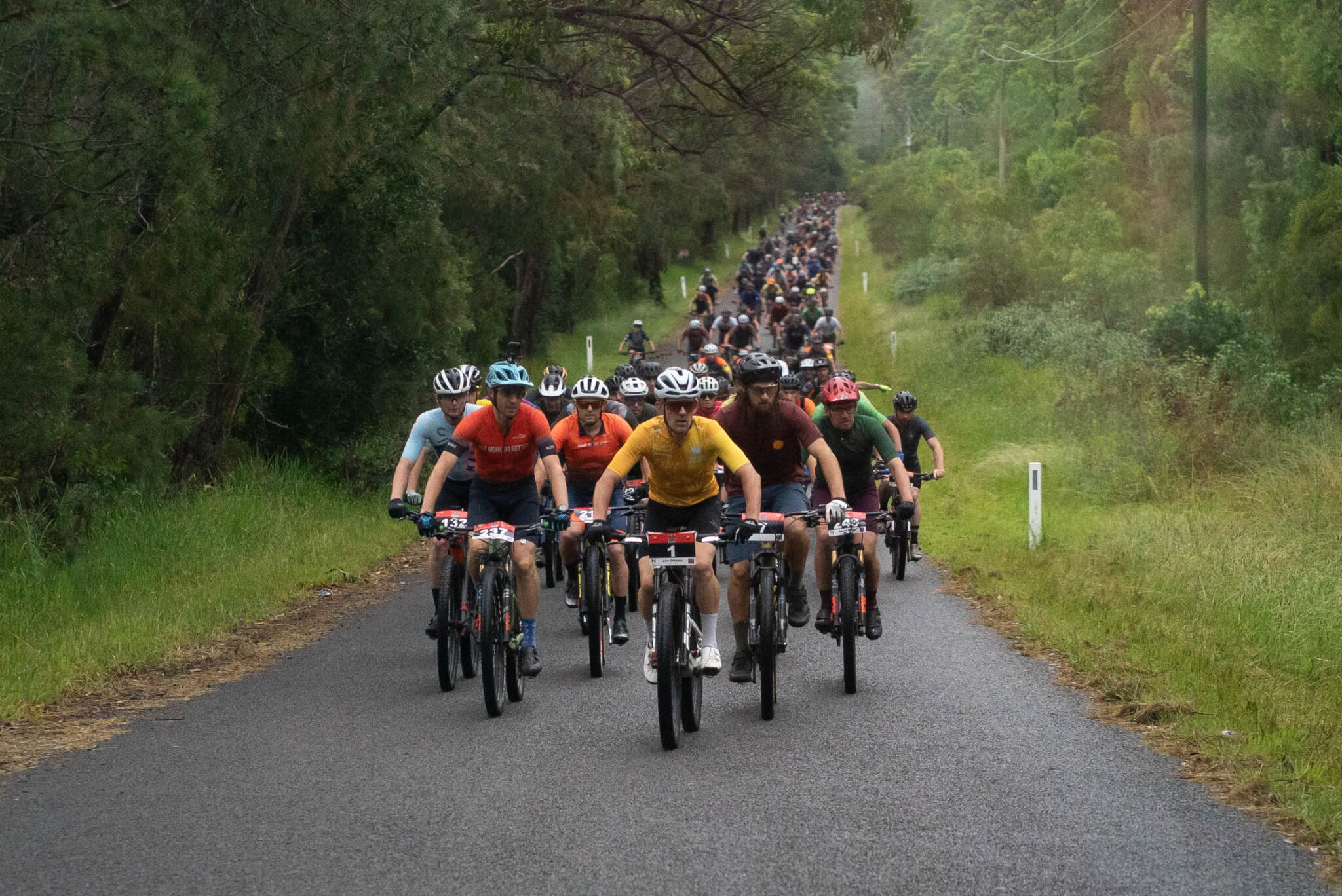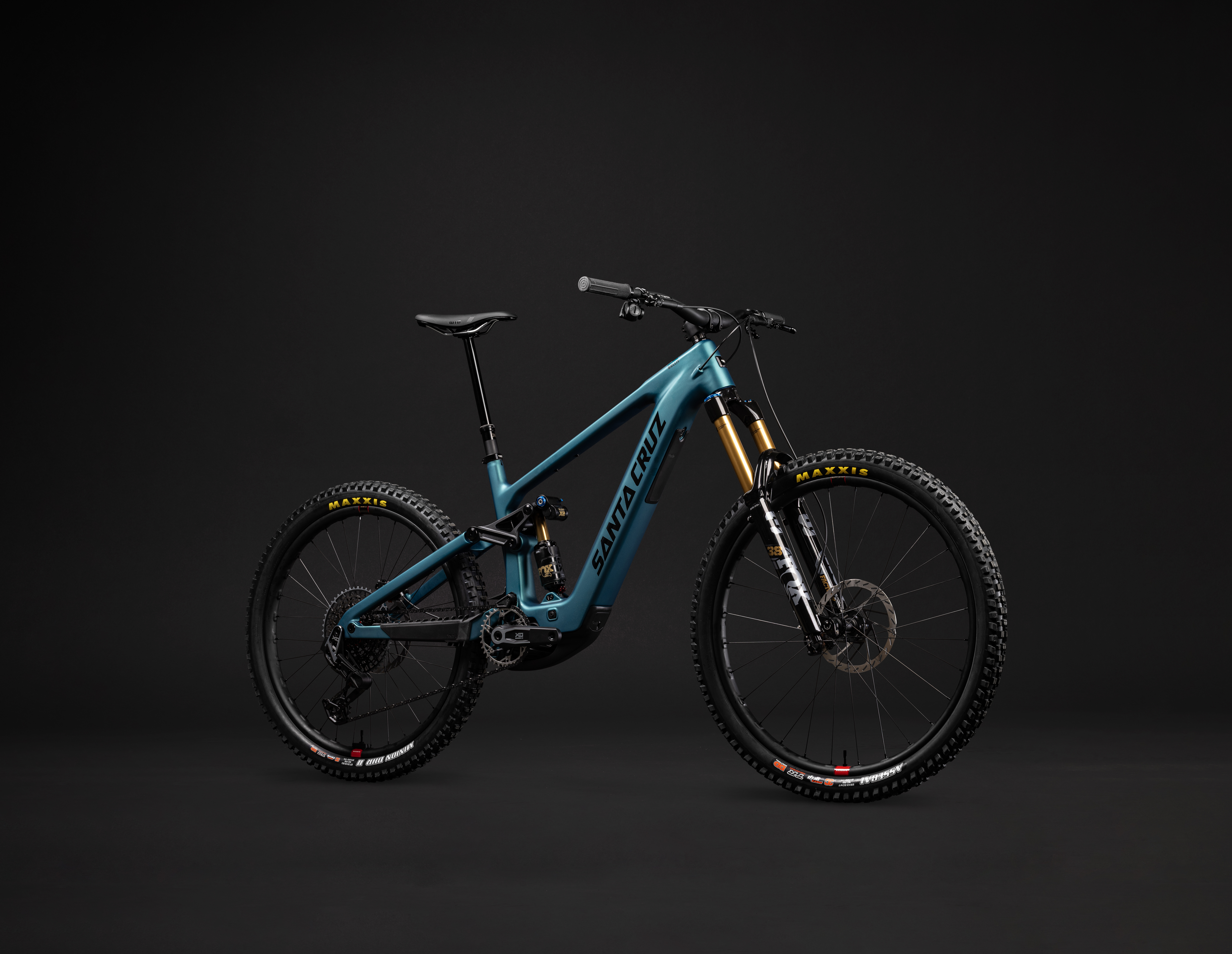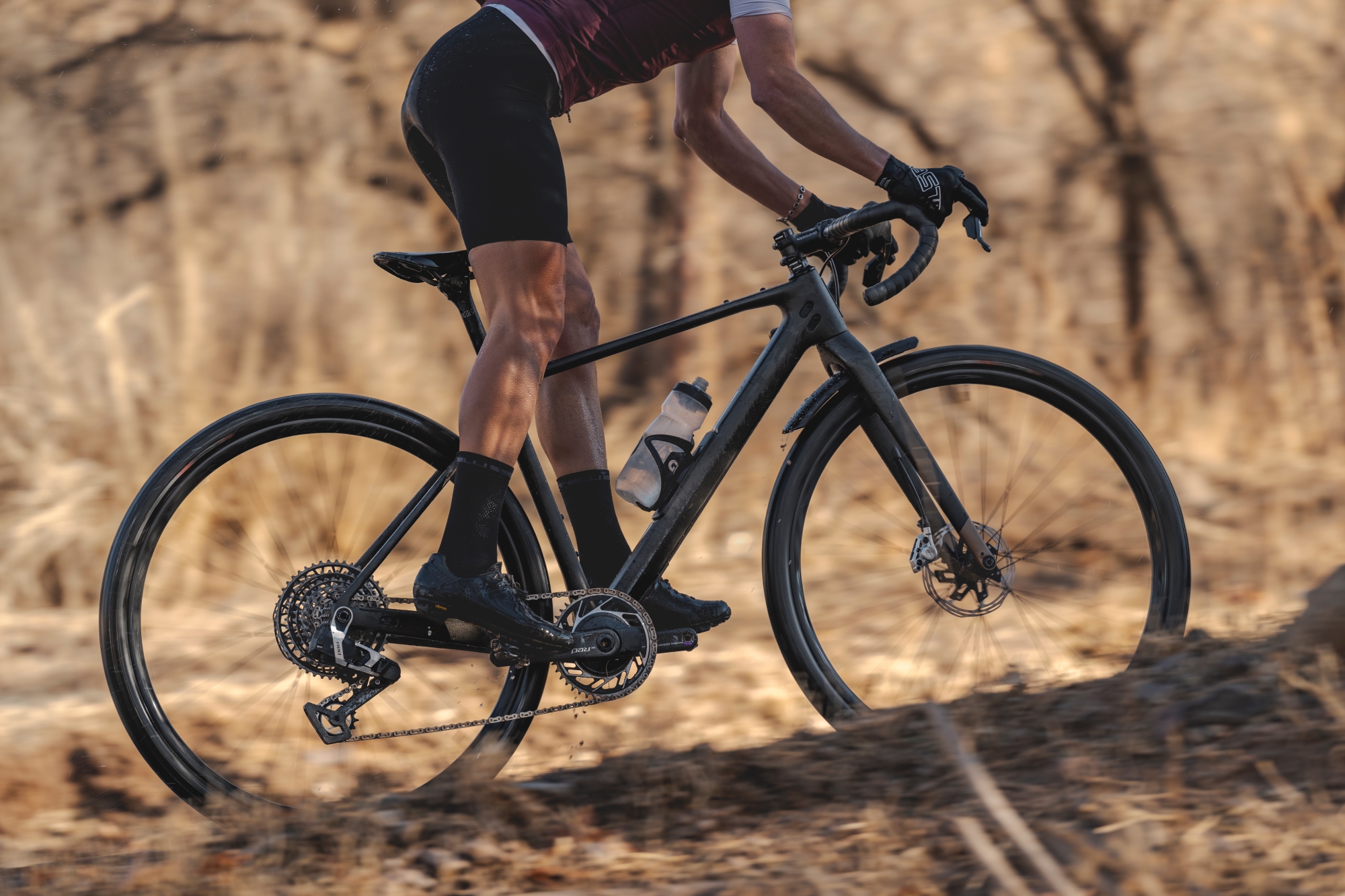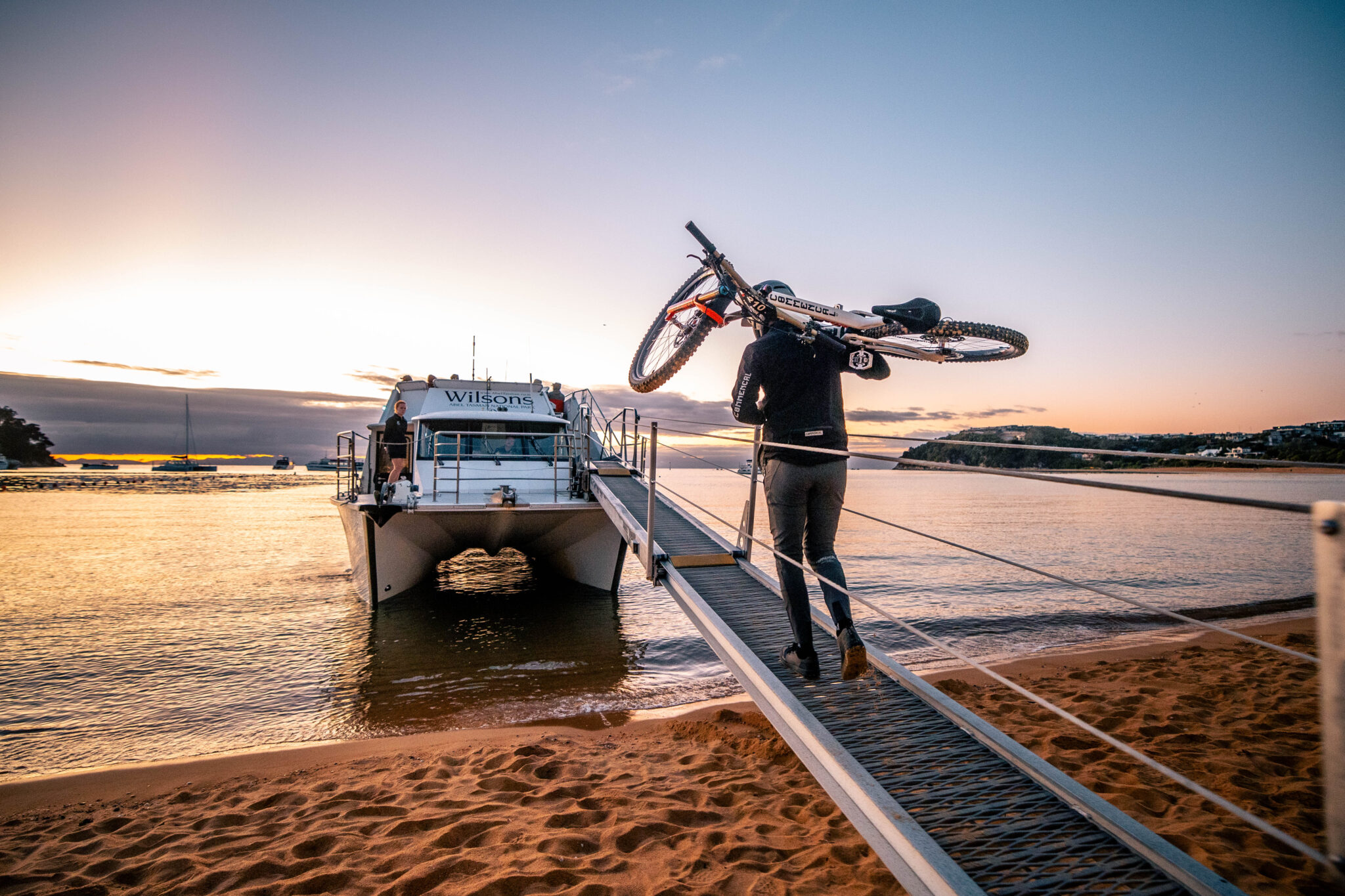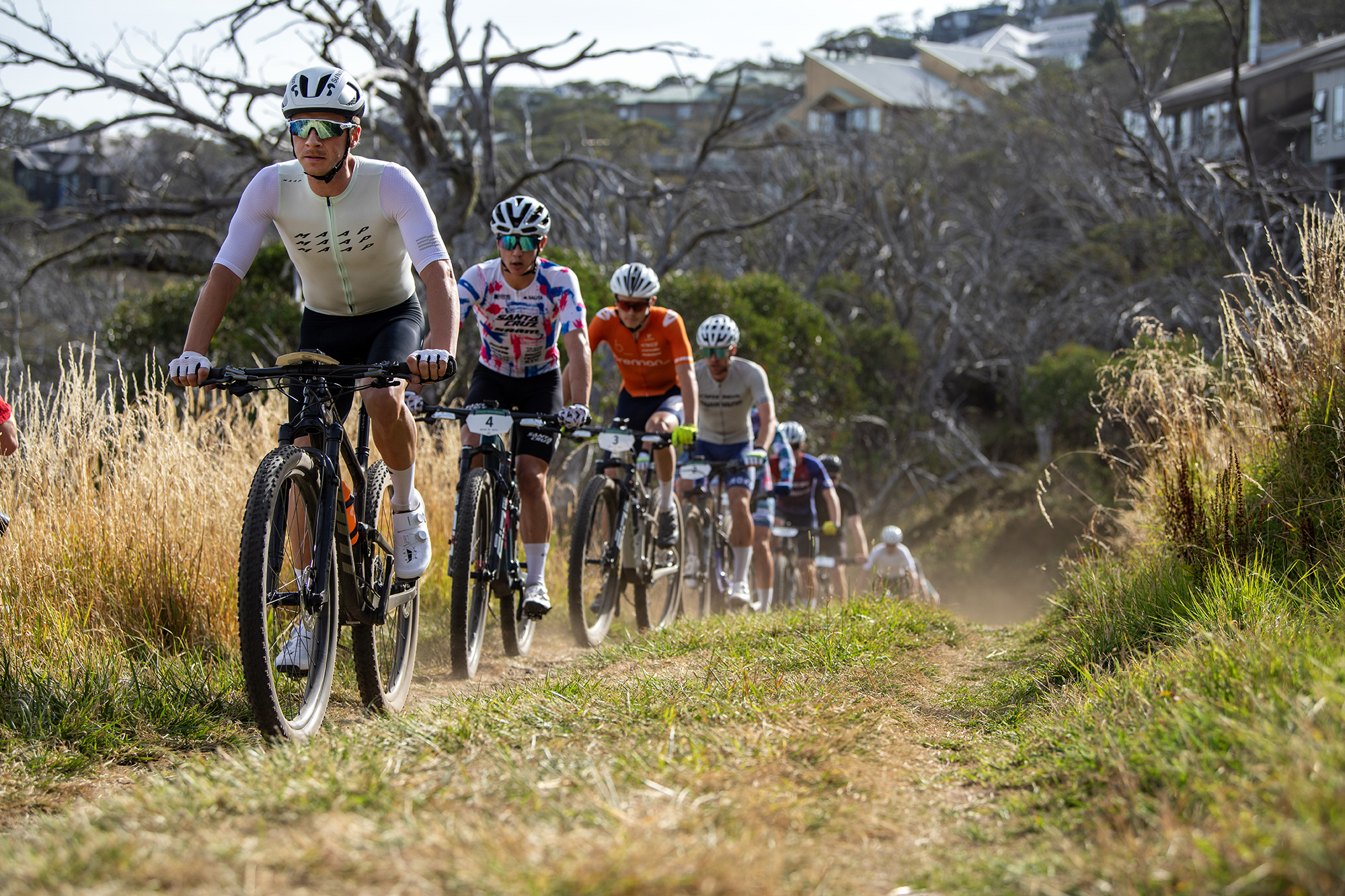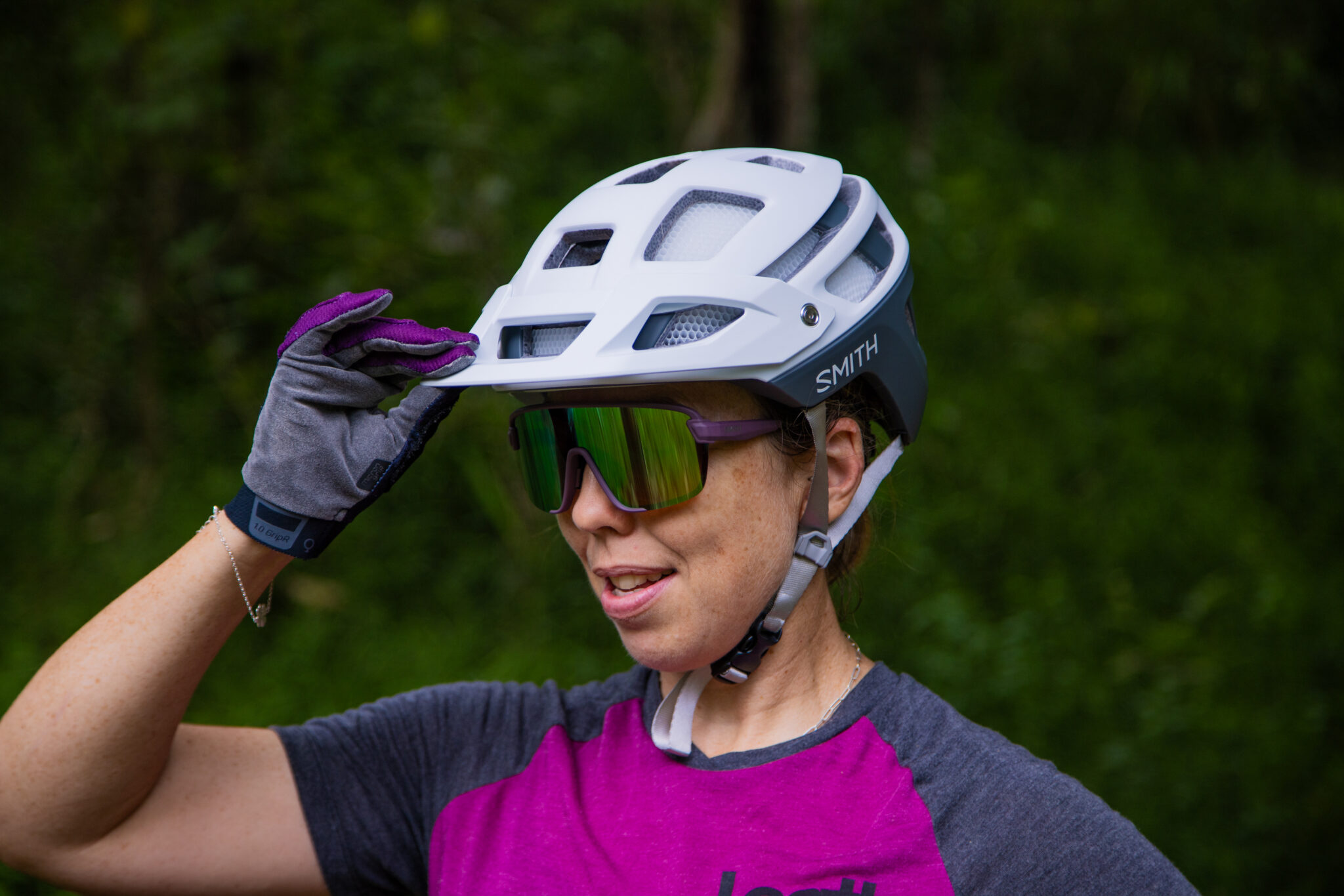Racing in Paradise at the Reef to Reef MTB Stage Race
Reef to Reef takes in volcanic rainforest mountainsides, sandy creekside trails, dusty farm roads, hardpacked, chewed out moto trails, and of course, finally, the stunning beach.
Words: Imogen Smith
Photos: Tim Bardsley-Smith
Reef to Reef was born out of a small race much beloved of locals called the Triple R. Standing for Rural, Rainforest, and Reef, the Triple R was (and still is) an annual bash that took racers from the dry paddocks of Mount Molloy, down through the epic Bump Track descent in dense tropical rainforest to emerge on Seven Mile Beach and the Great Barrier Reef: Rural, rainforest, reef. The huge potential that Triple R offered saw Reef to Reef grow up to wrap it, so that the Triple R is now run alongside Reef to Reef’s final stage, which stays true to the epic route.

Reef to Reef was the third and last event to join Ironman’s Epic Series Australia, alongside Cape to Cape and Port to Port, finally bringing the incredibly varied terrain and scenery of its parent, the Triple R, to the masses. Reef to Reef takes in volcanic rainforest mountainsides, sandy creekside trails, dusty farm roads, hardpacked, chewed out moto trails, and of course, finally, the stunning beach. As such, it’s a great way to explore the mountain biking on offer in Tropical North Queensland, going far beyond Smithfield’s world-renowned trails into secret spots on the Tablelands, hitherto ridden only by a handful of lucky locals.
While Reef to Reef’s stablemates in WA (Cape to Cape) and NSW (Port to Port) also take in some pretty special scenery and excellent trails, Reef to Reef’s undeniably got one advantage over its stablemates: the weather. Held in August, southerners can jump on a plane in the depths of winter and emerge on the tarmac at Cairns Airport in another world populated by palm trees and sunbirds. In short, on holidays.

In keeping with the holiday vibe, organisers have made socialising a central part of each day. Finish lines have plenty of seating areas under beach umbrellas to chill out, grab some food or a drink, and wait until you feel ready to wash your bike at the bike washes provided and head to the beach or the pool.
Racing Reef to Reef
The vibe at Reef to Reef was one of the most relaxed and friendly I’ve ever encountered. Sure, there’s the aforementioned weather, but it was more than that. I think a blanket of gratitude had covered everyone involved. After the cancellation of Port to Port earlier in the year due to extreme weather, alongside the cancellation of numerous other stage races and individual events for the same reason, most people were just so chuffed to be able to not only travel, but race their bikes in an area that somehow managed to be dusty. For me and a lot of the other Elite riders, we’d come off racing in wet, sub-10 degree trails in Wagga Wagga for the XCM National Champs, and while that race was well run and on a nice course, it wasn’t, well, Cairns.
Stage one kicked racing off at Smithfield, which has seen a lot of hit-outs over the years, not least the XCO and Downhill World Championships in 2017. The twist to stage one was the time trial format, with each team or solo in each category heading out in seeding order with 20 second gaps between riders.

Of all the stages, the Smithfield time trial was the shortest. Pity it also served up the most climbing, too. With 700m to ascend in just 18 kilometres, this was a hefty challenge even for the fittest riders. The first climb was on road, then dirt and rocky fire road, and rewarded racers with steep singletrack flow trail down Smithfield’s iconic red clay mountainside. The second climb took us up dozens upon dozens of perfectly snaking switchback singletrack corners to a rocky outcrop in the middle of dense jungle, before hurling racers down an epic singletrack descent of rocks, roots, and of course, big berm corners that swooped us down the mountainside. A few brief technical climbs later, and we were back onto the trails the pros had used in 2017: fast, wide, grassy corners that ducked in and out of the bush, all the way down to the finish line.

I always love starting a stage race with a time trial. It gives you a chance to blast the nerves out of the legs and, the ‘race of truth’ format gives you a really good idea of where you sit in the rankings, and what you need to aspire to the next day. For a lot of riders, too, the first stage around Smithfield was an opportunity to work out how to race their mountain bike with a partner.
Pairs racing returns
While pairs racing in mountain bike stage races is long established overseas, it’s only been here in Australis thanks to the Epic Series races. We had a great year practising in 2018 and 2019, but thanks to COVID etc. etc., many riders at Reef to Reef were either out of practice, or still yet to have a go. Let me enlighten you.

Pairs racing has a lot going for it. Any victory shared, after all, is a victory doubled. Racing pairs adds layers of emotion and exertion to an event that really deepens the experiences on offer – and that’s what you’re paying for, right? You can ride together, with your partner, and share the ups and downs. You can help one another if things go awry, like if you get a flat tyre. Building on that, savvy pairs racers can choose how they make their adventure as efficient and fast as possible. You can experiment with pushing and towing, leading and following in the singletrack, and pulling and drafting on the flats. Often overlooked is the fact that pairs racing, with the strengths of two riders combined, means you go faster on all types of terrain, flat, technical, uphill, or down. We know that riding socially can have a huge effect on how much we perceive our exertion, making the kilometres fly by and the hills melt down to nothing. In short, an effort shared is an effort halved.
With that out of the way, the ‘normal’ racing began at Davies Creek on Stage 2, where we lined up for wave starts based on our Stage 1 seeding.

If you’re not familiar with the Cairns region, first of all, it’s beautiful. Dramatic, rainforested mountains tumble all the way to the reef, creating a lush, Jurassic landscape where you half expect to see dinosaurs wandering around, eating the treetops. At the top of the hills flanking Cairns is the Atherton Tablelands. A food bowl area with a totally different, subtropical climate, and populated with orchards, dry rainforest, and fabulous mountain biking destinations, like Atherton, Mount Molloy, and Davies Creek. Davies Creek is a 40-minute drive from Cairns down below, up one of the twisty roads to the Tablelands. We left the red volcanic soils behind us and emerged into a chilly morning and trails of dry river sand on hardpack, punctuated by dozens of creek crossings of varying (and unpredictable) depth, and some sweet, sweet hand-built singletrack. The Davies Creek stage, while not reaching Smithfield’s heights, still dished up plenty of climbing, most of it in the form of short, fire road pinches in and out of wet gullies. On this terrain, the 40-kilometre stage disappeared quickly, and before too long racers found themselves in the fast, twisty, and slightly downhill singletrack all the way to the finish.
Recovery done right
The best part about racing at Davies Creek was visiting Davies Creek itself after the stage. Riders who rode or drove a few kilometres up the entry road found themselves in a typical paradisical Aussie waterhole with fast-flowing water, just turbulent enough to give the quads and the glutes a restorative pummelling – even better value than a massage at the Cairns Night Markets! Further up the road, deeper pools above impressive waterfalls await those willing to make the trip. Perfect recovery for Stage 3.
Stage 3 saw riders drive up the range again, this time north of Davies Creek, to Mount Molloy. Mount Molloy has long been part of the history of mountain biking in the Cairns region, and locals are familiar with the gnarled moto and jeep trails that make this area a particular technical challenge without needing any fancy, purpose-built singletrack. Right at the heart of Mount Molloy sits Wetherby Station, a private property well known to racers of the infamous Crocodile Trophy, having hosted numerous stages and race camps over the years.

The trails around Mount Molloy contrast with the groomed berms of Smithfield and the undulating, hand-built trails at Davies Creek. Racing over 59 kilometres, Stage 3 saw riders encounter ‘singletrack’ that has evolved, rather than been built: scratched into mud during the wet, and pummelled to powdery dust during the dry, by vehicles like motos, quad bikes, Polarises and jeeps. These are trails where we were confronted, at every gully and every turn, with a choice between three, four, five or more lines, any of which might take us into a chewed out ditch, or serve up a smooth, banked way out. The ruts were completely unpredictable and completely deadly – at one moment, the good line might be on the left – at the next, the right. Sometimes it’s the centre, and at other times it’s far off in the bushes, and only one or two lucky riders spotted it, passing everyone else forced to dismount – or worse.

It’s in trails like this that teamwork really comes to the fore- teamwork between pairs, sure, but more often between groups of riders, all of whom, when I was there at least – decided that mutual survival was more important than racing fast – for a time.
After the ruts came the rainforest, as riders took to smooth, undulating dirt roads in and out of lush creekbeds, before taking in some heartstarting climbs on the roads back to Mount Molloy and the race finish.
With all its history and variety, Stage 4 was by far the most anticipated for racers of Reef to Reef, not least because we’d be joined on the trails and at the beachside finishline by racers of the historic Triple R.

The Triple R was conceived way back in 1990, when Glen Jacobs and Peter Blakey were shown an epic ride that the local Mossman MTB crew loved, and fell in love themselves, so much so that they wanted to share it. So, in 1991, about a dozen riders performed a Le Mans start (that’s when you run like an idiot to your bike leant up against a tree 200m away and mount up) off the verandah of the Mt Molloy pub in the first ever Triple R, and we suspect this makes it the oldest continually running race in Australia.

This year saw several hundred competitors, setting off just a few hundred metres from the classic Queensland pub at Mount Molloy. We were riding vastly different bikes from those back in 1991, but with the same spirit of camaraderie and adventure. After all, little of the route has changed. The pure joy and the insane contrasts of a race that takes you through dusty dirt tracks, chewed out moto and jeep trails, then down a ludicrous, flat-out rainforest descent and out, blinking, onto the purest beachfront in Australia are exactly the same as they were 30 years ago, regardless of bike.

Thanks for having us Reef to Reef, you were just the holiday and bike race everyone needed!


